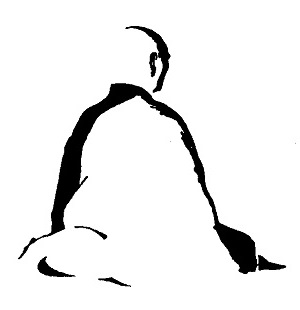|
thoughts || q & a || kalama || books || photos || tiếng việt | ||||
| | ||||

| 
| |||
|
Cāgānussati Meditation Dāna and Cāga both means generosity, giving donation to charity but Cāga stresses more of the "totally let go" definition. The great Buddha was an example of the most generosity - giving up his life, his throne, his wife and children and his body. There are two types of donations: one is like letting fly of a kite, the other is like releasing a bird.
If you donate but with the donation you wish to gain merits so you can go to better worlds, so you can get something back, your generosity is like letting fly of kite, you let go but still holding on the string to keep it back, with some underlying purpose of gain of karmic merits, of release from cycle of birth-death. You can donate the way you free a bird, once it flies off it's gone for good, no attached strings, you forget about it. Cāga is much more than to give, it means to give up.
What is Cāgānussati Meditation? Even the poorest person can practice this method of meditation - only by assessing his own and see if he can further open his hands. In Buddha's texts, it was mentioned that the monks having no possessions, no money, no home, could still practice Cāgānussati Meditation by sharing what he got in his begging bowl with his masters and fellow monks. Please do not look at the content of a monk's begging bowl and dismiss it as cheap, not worth worrying about. Although it actually is .. cheap. After the morning begging, the bowl would likely to have in it some pieces of bread, tofu, rice, fermented tofu, soy sauce, bananas, fruits ... all up maybe less than 50 cents in value. But to the monk, it has no monetary value, it is his entire possession. That is all he's got. But if he sees a fellow monk who is old, has a bad leg and could not go out begging that morning, he would share half of his begging to him. After a long walk begging, you get really hungry. And to able ale to share what you got with another requires some effort. To you it may not be much, but to us monks, that would be the greatest generosity, the greatest donation. When you see a toothless old monk, you find in your bowl things he can eat and give those to him. That's greatest charity right there.
We must see that we only keep materialistic things because: 1. We have a current need to use it, not to hoard; and 2. There is no-one to give out to.
If all day, we can carry on thinking "I do not regret giving up things. I will try to give with all my capabilities. I am not a miser" - then that's Cāgānussati Meditation.
| ||||
thoughts || q & a || kalama || books || photos || tiếng việt
 Cāgānussati Meditation is self assessing if we can completely share with open arms with no regrets and no discrimination of the receivers. With that thinking, you can always practice even in destitute situation. So you sit up straight, focus your mind and say to yourself: I can now in all my capacities share completely all my possessions with anyone.
Cāgānussati Meditation is self assessing if we can completely share with open arms with no regrets and no discrimination of the receivers. With that thinking, you can always practice even in destitute situation. So you sit up straight, focus your mind and say to yourself: I can now in all my capacities share completely all my possessions with anyone.

